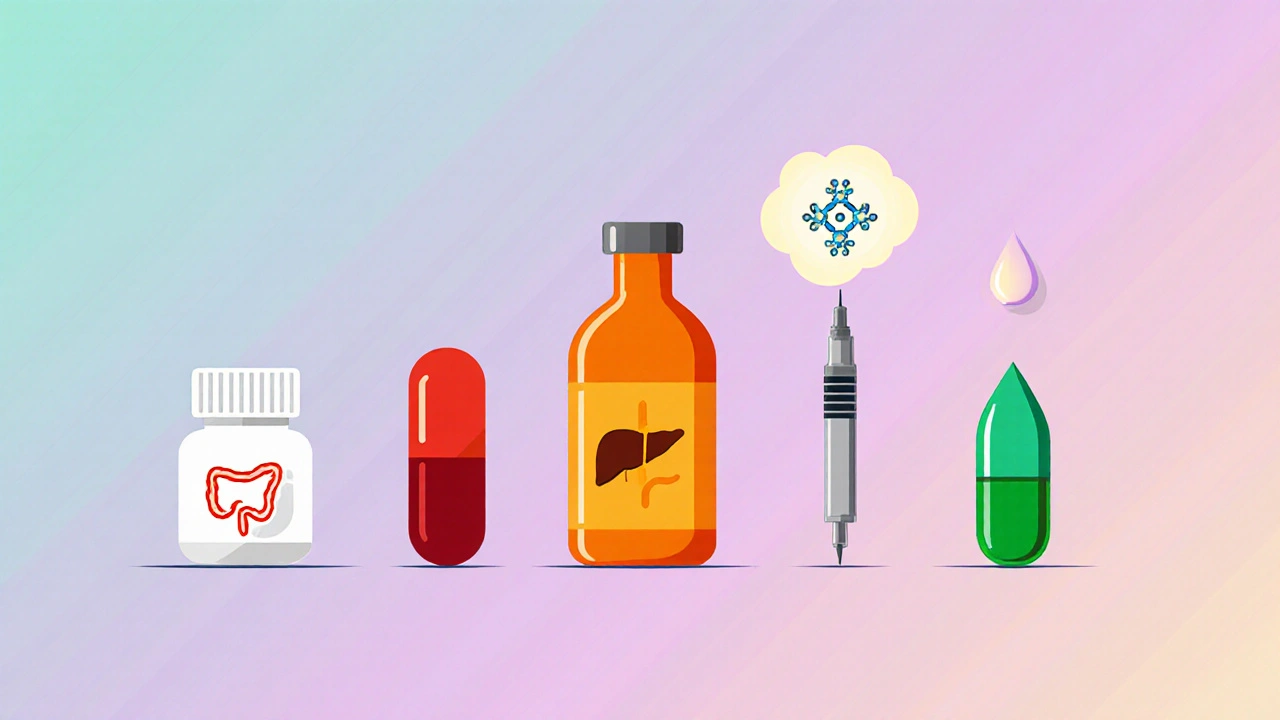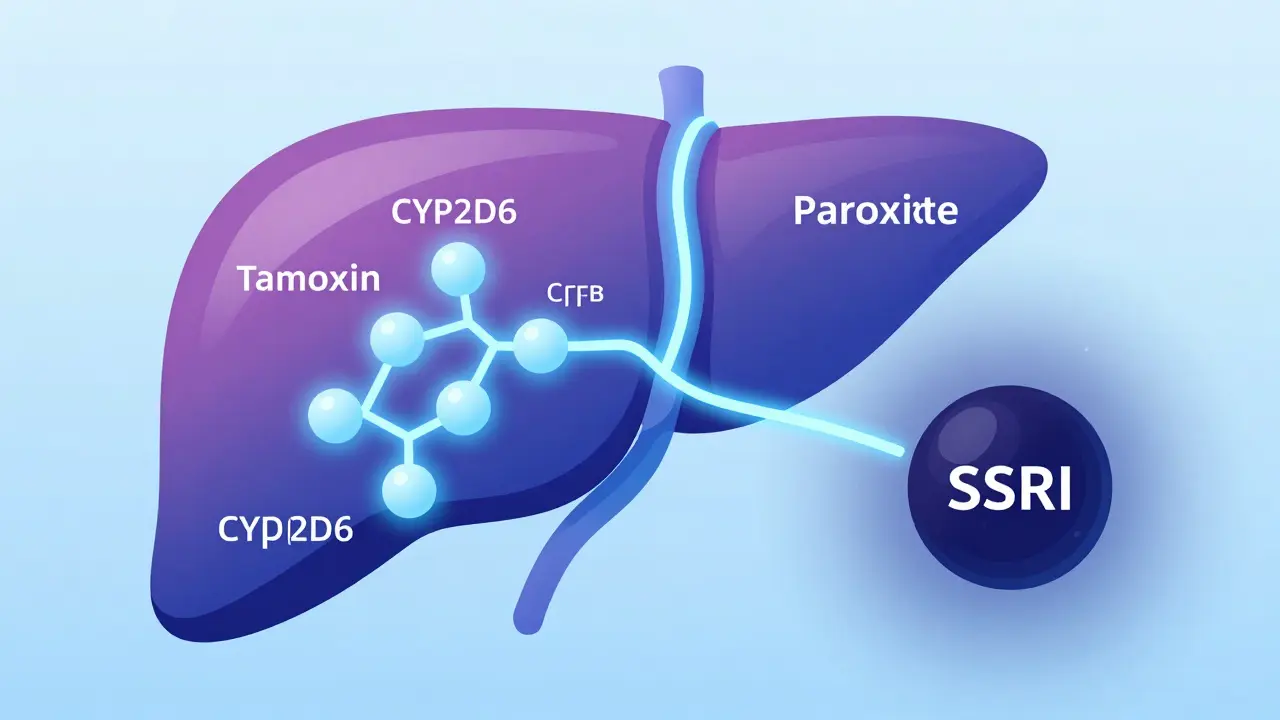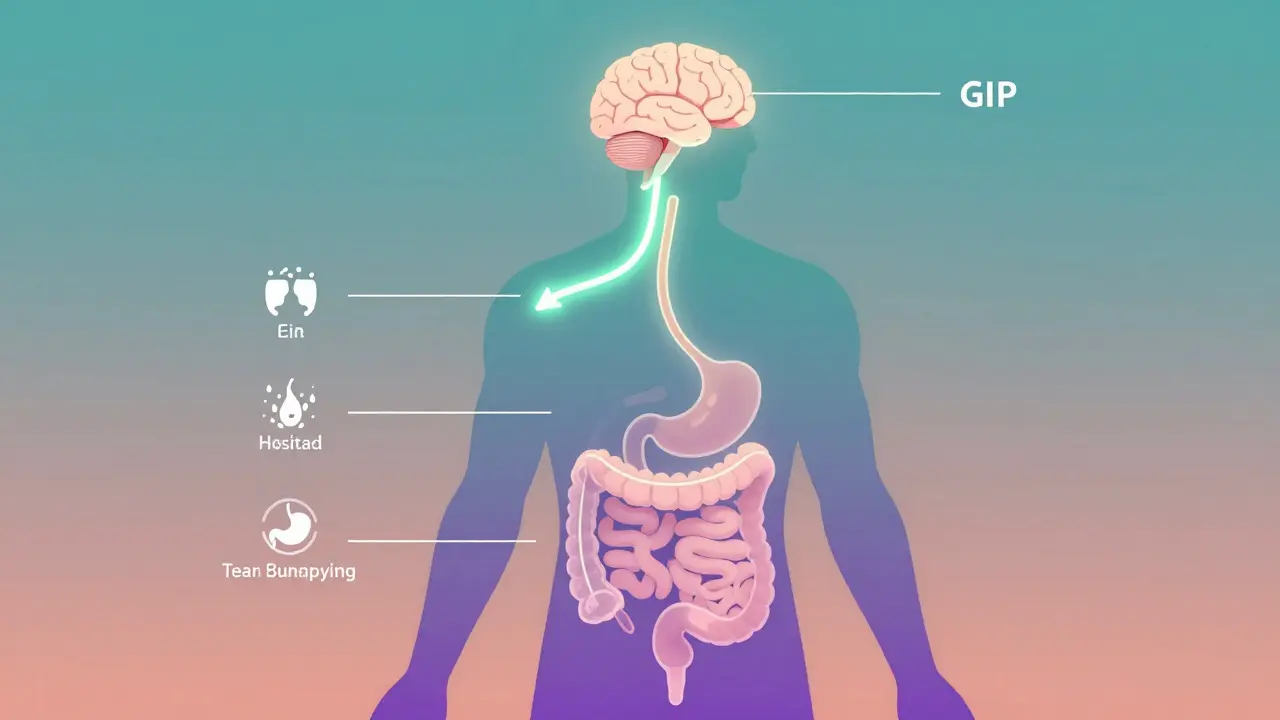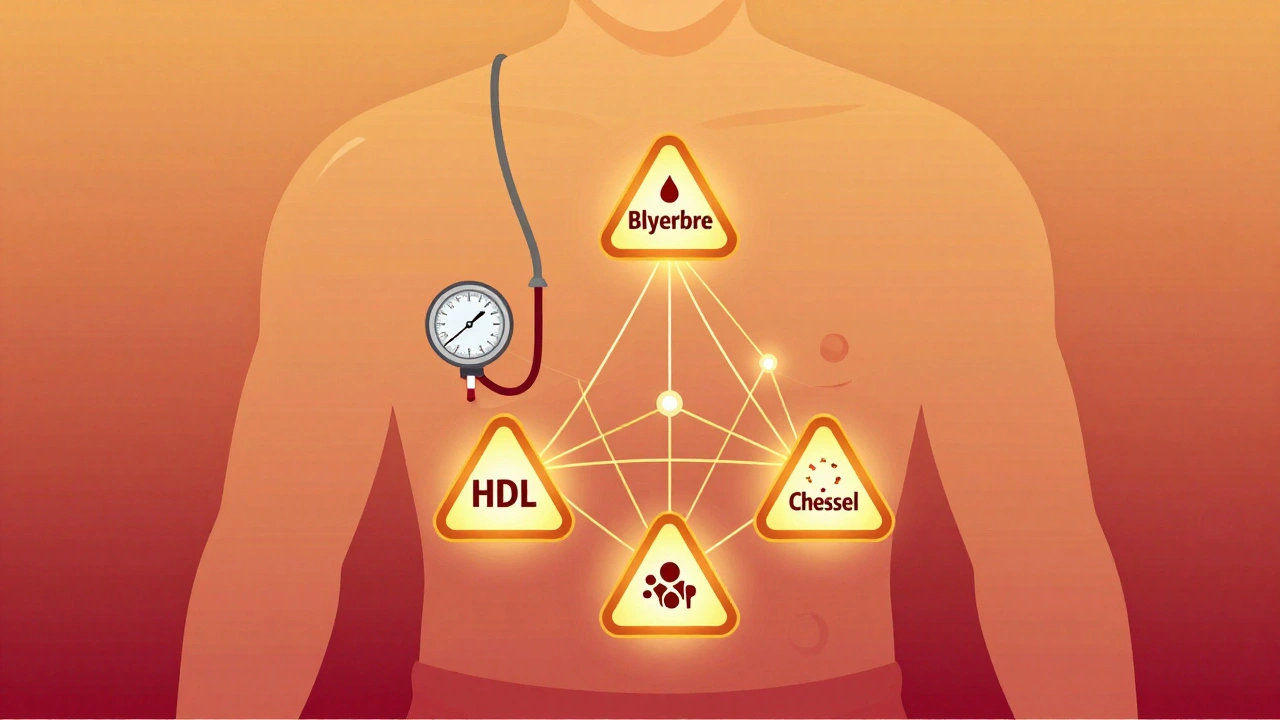Cholesterol Medication Selector
Recommended Medication:
When it comes to lowering LDL‑cholesterol, Zetia is the brand name for ezetimibe, a medication that blocks cholesterol absorption in the intestines. It’s often prescribed when statins aren’t enough or cause side‑effects, but many patients wonder how it stacks up against other options. This guide walks through the big players, how they differ, and which situations call for each.
How Zetia Works and Who It Helps
Ezetimibe targets the NPC1L1 transporter in the small‑bowel wall, cutting dietary and biliary cholesterol entry by about 15‑20%. Because the drug works outside the liver, it can be combined with statins for an added 10‑15% LDL drop. Ideal patients include:
- Those already on a statin but still above target LDL‑C.
- People who can’t tolerate high‑dose statins due to muscle pain.
- Individuals with genetic conditions like sitosterolemia where cholesterol absorption is high.
Most Common Alternative Classes
Below are the primary drug families you’ll hear about when weighing Zetia against other choices.
- Statins (e.g., atorvastatin, rosuvastatin) inhibit HMG‑CoA reductase, slashing liver‑made cholesterol by 30‑55%.
- PCSK9 inhibitors (evolocumab, alirocumab) are injectable antibodies that boost LDL‑receptor recycling, achieving 50‑60% reductions.
- Niacin (nicotinic acid) lowers LDL modestly while raising HDL, but its flushing side‑effect limits use.
- Fibrates (fenofibrate, gemfibrozil) mainly trim triglycerides; they can shave off 5‑10% LDL.
- Lifestyle changes (diet, exercise, weight loss) can cut LDL by 5‑15% when done aggressively.
Side‑Effect Profile: What to Expect
Every medication has trade‑offs. Here’s a quick snapshot.
- Zetia: Generally well‑tolerated. Rarely causes mild GI upset or liver‑enzyme elevations.
- Statins: Muscle aches (myalgia) occur in up to 10% of users; occasional liver‑enzyme rise.
- PCSK9 inhibitors: Injection‑site reactions and occasional flu‑like symptoms.
- Niacin: Flushing, itching, and higher blood‑sugar levels, especially in diabetics.
- Fibrates: Gastro‑intestinal upset and rarely gallstones.
Cost Considerations
Affordability can be a deal‑breaker. Prices listed are US averages; insurance coverage varies.
- Zetia: About $150‑$200 for a 30‑day supply (generic ezetimibe cheaper at $30‑$50).
- Statins: Generic versions like atorvastatin cost $10‑$30 per month.
- PCSK9 inhibitors: $1,400‑$1,500 per injection, administered every 2-4 weeks.
- Niacin: Over‑the‑counter formulas run $15‑$30 per month.
- Fibrates: Generic fenofibrate costs $20‑$40 monthly.

Head‑to‑Head Comparison Table
| Medication | Drug class | Mechanism | Typical LDL‑C reduction | Cost (US$ / month) | Common side‑effects | Best for |
|---|---|---|---|---|---|---|
| Zetia (ezetimibe) | Cholesterol absorption inhibitor | Blocks NPC1L1 transporter in gut | 15‑20% (add‑on) | $30‑$200 | Mild GI upset, rare liver‑enzyme rise | Statin‑intolerant or need extra LDL drop |
| Atorvastatin | Statin | Inhibits HMG‑CoA reductase | 30‑55% | $10‑$30 | Myalgia, elevated liver enzymes | First‑line for most patients |
| Rosuvastatin | Statin | HMG‑CoA reductase inhibition (potent) | 45‑55% | $15‑$35 | Myalgia, rare rhabdomyolysis | High‑risk patients needing strong LDL cut |
| Evolocumab | PCSK9 inhibitor | Blocks PCSK9, preserving LDL receptors | 50‑60% | $1,400‑$1,500 (injection) | Injection site reaction, flu‑like symptoms | Familial hypercholesterolemia or ASCVD with statin intolerance |
| Niacin | Vitamin B3 derivative | Reduces hepatic VLDL synthesis | 10‑15% LDL, ↑HDL | $15‑$30 | Flushing, hyperglycemia, liver toxicity | Patients needing HDL boost, low‑cost option |
| Fenofibrate | Fibrate | Activates PPAR‑α to lower triglycerides | 5‑10% LDL | $20‑$40 | GI upset, gallstones, renal concerns | High triglyceride phenotype |
Decision‑Making Checklist
Use this quick list to see which option fits your profile.
- Do you already take a statin? - If yes, consider adding Zetia for extra 10‑15% LDL drop.
- Do you experience muscle pain on statins? - Zetia alone or a low‑dose statin plus Zetia may work.
- Is your LDL >190mg/dL with a genetic condition? - PCSK9 inhibitors or high‑intensity statins are first‑line; Zetia can be added.
- Are cost and injection aversion major concerns? - Generic statins or ezetimibe are most affordable.
- Do you need a big HDL boost? - Niacin provides that, but weigh flushing vs. benefit.
Real‑World Scenarios
Case 1 - Middle‑aged man with statin‑associated myalgia
John, 52, was prescribed atorvastatin 40mg but stopped after two weeks due to aching thighs. His LDL was 150mg/dL. Switching to a low‑dose rosuvastatin 5mg plus Zetia reduced his LDL to 95mg/dL without muscle symptoms.
Case 2 - Young adult with familial hypercholesterolemia
Maria, 28, carries a LDL‑R mutation. Even high‑intensity statins left her LDL at 130mg/dL. Adding evolocumab cut it to 55mg/dL; adding Zetia later provided an extra 5% drop, bringing LDL under 50mg/dL.
Case 3 - Cost‑conscious retiree
Bob, 68, prefers pills over injections. He uses generic simvastatin 20mg ($12/month) and adds generic ezetimibe ($30/month) for a total $42/month, achieving a 35% LDL reduction-good enough for his target.
Key Takeaways
Choosing the right cholesterol therapy isn’t one‑size‑fits‑all. Zetia shines as a low‑side‑effect add‑on or solo option when statins aren’t tolerated, but it rarely matches the LDL‑cut power of high‑intensity statins or PCSK9 inhibitors. Evaluate your risk level, budget, and tolerance, then match the drug’s mechanism to your needs.
Frequently Asked Questions
Can I take Zetia without a statin?
Yes. Zetia can be used alone, especially if you can’t tolerate any statin. It typically lowers LDL‑C by 15‑20% on its own, which may be enough for mild hypercholesterolemia.
Is Zetia safe for people with liver disease?
Ezetimibe has a low incidence of liver‑enzyme elevation, but doctors still monitor liver function periodically, especially if you’re also on a statin.
How does the cost of Zetia compare to PCSK9 inhibitors?
Zetia (generic ezetimibe) typically costs $30‑$50 per month, while PCSK9 inhibitors run over $1,400 per month, making Zetia far more affordable for most patients.
Will Zetia raise my HDL levels?
Ezetimibe’s impact on HDL is modest (≈3‑5% increase). If a significant HDL boost is a priority, niacin may be a better choice, assuming you can tolerate its flushing.
Can I combine Zetia with a fibrate?
Yes, many clinicians pair ezetimibe with fenofibrate to address both high LDL and high triglycerides. Monitoring kidney function is recommended.







Danielle de Oliveira Rosa
October 4, 2025 AT 02:30When one contemplates the myriad pathways to lower LDL, it becomes evident that each therapeutic class reflects a distinct philosophical approach to lipid management. Zetax, as an absorption inhibitor, embodies the principle of targeted restraint, whereas statins invoke the broader, more aggressive inhibition of hepatic synthesis. This dichotomy invites us to consider not merely efficacy but also the lived experience of the patient, their tolerance, and the socioeconomic context that frames drug access. In this light, the decision matrix transforms from a clinical checklist into a moral calculus. Ultimately, the prudent clinician must harmonize biochemical targets with the patient’s narrative.
Joe Evans
October 5, 2025 AT 02:06Hey folks! 😊 If you’re looking for a simple way to think about Zetia versus the other options, just remember: it’s like a side‑kick to the main hero (the statin). It adds a modest boost without the muscle‑ache drama, and it’s cheap enough that most insurance plans won’t throw a fit. Keep an eye on liver enzymes occasionally, but otherwise it’s pretty chill. Hope that helps! 👍
John Petter
October 6, 2025 AT 01:43Zetia is a decent add‑on for statin‑intolerant patients.
Colin Boyd
October 7, 2025 AT 01:20Everyone acts like Zetia is the silver bullet yet it merely offers a modest reduction in LDL; the hype is overblown.
Tarun Rajput
October 8, 2025 AT 00:56Indeed, the nuanced pharmacodynamics of ezetimibe merit a thorough exposition, for it operates at a decidedly distinct anatomical juncture-the intestinal brush border-by obstructing the Niemann‑Pick C1‑Like 1 (NPC1L1) transporter, thereby curbing both dietary and biliary cholesterol assimilation. This mechanism, while elegantly simple, translates clinically to an approximate 15‑20% diminution in LDL‑C levels when employed as monotherapy, and an additional 10‑15% when synergistically combined with a statin, effectively bridging the therapeutic gap for patients who encounter myopathic side‑effects from high‑intensity statins. Moreover, the pharmacokinetic profile of ezetimibe boasts a favorable safety spectrum, with adverse events seldom exceeding mild gastrointestinal discomfort or transient hepatic enzyme elevations, a stark contrast to the myalgia, elevated transaminases, and rare rhabdomyolysis observed with potent HMG‑CoA reductase inhibitors. From an economic standpoint, the advent of generic ezetimibe has dramatically attenuated the cost barrier, positioning the medication within a $30‑$50 monthly window, thereby rendering it a viable option for cost‑conscious individuals who nonetheless require an LDL‑lowering adjunct. In clinical practice, the decision matrix should weigh the patient’s baseline LDL burden, statin tolerance, comorbid conditions such as diabetes mellitus, and familial hypercholesterolemia status; for instance, a patient with a documented LDL‑R mutation may derive greater incremental benefit from PCSK9 inhibition rather than solely relying on ezetimibe. Nevertheless, for the majority of patients whose LDL remains above target despite maximally tolerated statin therapy, ezetimibe emerges as an evidence‑based, low‑risk, and cost‑effective strategy, complementing lifestyle modifications such as dietary cholesterol reduction, increased soluble fiber intake, and regular aerobic exercise. It is also worth noting that the modest HDL‑raising effect of ezetimibe, albeit limited to a 3‑5% increment, may contribute additional cardioprotective value in certain dyslipidemic phenotypes. Finally, clinicians should remain vigilant for drug‑drug interactions, particularly with cyclosporine, which may amplify ezetimibe serum concentrations; routine lipid panels should be scheduled at 4‑6 week intervals following initiation or dosage adjustment to ascertain therapeutic response. In sum, while ezetimibe does not eclipse the LDL‑lowering potency of high‑intensity statins or PCSK9 inhibitors, its role as a well‑tolerated, financially accessible adjunct solidifies its place within the contemporary lipid‑lowering armamentarium.
Sarah Arnold
October 9, 2025 AT 00:33Great points, Tarun! ✅ As a practicing cardiologist, I’ve seen ezetimibe effectively bridge the gap for patients who can’t tolerate high‑dose statins. It’s especially useful when combined with lifestyle changes-think Mediterranean diet, regular walking, and weight management. Just monitor liver enzymes periodically, and you’ll have a solid strategy. 💪
Annie Tian
October 10, 2025 AT 00:10Hope you’re all feeling empowered to explore your options! Zetia offers a gentle, well‑tolerated route, especially when cost is a concern; it’s far less intimidating than injections, and the generic version keeps monthly expenses low. Remember, consistency is key-take your medication as prescribed, keep up with diet and exercise, and schedule regular lipid panels to track progress. You’ve got this! 😊
April Knof
October 10, 2025 AT 23:46From a cultural perspective, many traditional diets around the world-like the Japanese or Mediterranean-naturally lower cholesterol intake, which can complement pharmacologic therapy. It’s fascinating how dietary patterns can reduce reliance on expensive medications, and patients often appreciate the holistic approach.
Tina Johnson
October 11, 2025 AT 23:23While Zetia is often touted as a harmless add‑on, the reality is that its LDL‑lowering capacity is modest at best, and many patients end up on this drug simply because prescribers are unwilling to intensify statin therapy. This incremental approach may delay optimal cardiovascular protection, especially in high‑risk individuals.
Jason Divinity
October 12, 2025 AT 23:00It is absolutely essential to emphasize precision in language when discussing pharmacotherapy. Zetia, correctly identified as ezetimibe, should never be conflated with statins; the former targets intestinal absorption, the latter hepatic synthesis. Misrepresentation can lead to therapeutic errors, particularly in polypharmacy contexts. Moreover, the literature unequivocally demonstrates that, while ezetimibe is safe, its LDL‑C reduction is limited to 15‑20 % when used alone. Hence, clinicians must wield it judiciously, aligning expectations with empirical outcomes.
Alyssa Griffiths
October 13, 2025 AT 22:36Some people don’t realize that the pharmaceutical industry is colluding with insurers to keep the price of ezetimibe artificially high; the “generic” label is a sham, and the true cost is hidden behind complex rebate schemes, which means we’re all being tricked into paying for a drug that barely moves the LDL needle.
andrew parsons
October 14, 2025 AT 22:13Let us be unequivocally clear: the scientific consensus, backed by rigorous randomized controlled trials, affirms that ezetimibe is a modest LDL‑C reducer, safe, and cost‑effective when prescribed appropriately. 😊 However, any deviation from evidence‑based guidelines-such as overprescribing in low‑risk patients-constitutes a dereliction of medical duty. 💡 Accordingly, clinicians must adhere strictly to lipid‑management algorithms, employing ezetimibe chiefly as an adjunct to statins or when statin intolerance is documented.
Rajat Sangroy
October 15, 2025 AT 21:50Listen up, team! If you’re serious about getting your LDL down, you need to combine the right meds with an aggressive lifestyle-no excuses. Push yourself in the gym, cut the junk carbs, and stick to your prescription. The results will speak for themselves!
Sarah Arnold
October 16, 2025 AT 21:26Absolutely, Rajat. Pairing a disciplined exercise regimen with consistent medication adherence maximizes LDL reduction. Encourage patients to monitor progress weekly and adjust therapy as needed.
dany prayogo
October 17, 2025 AT 21:03Well, isn’t it just charming how the whole medical community loves to elevate ezetimibe to a near‑miraculous status, when in reality it’s merely a modestly effective, low‑risk adjunct that barely nudges LDL numbers-yet everyone claps like it’s the second coming of statins; the truth is that you can’t rely on a drug that only offers a 15‑20% reduction to prevent heart attacks in high‑risk patients, and the industry’s marketing spin does nothing but distract from the more potent options like PCSK9 inhibitors, which, although pricey, deliver a 50‑60% plunge in LDL and have robust outcome data backing them, unlike the tepid evidence supporting ezetimibe's long‑term cardiovascular benefits, which, let’s be honest, remain mostly inferential; moreover, the so‑called “affordable” generic ezetimibe still costs a few dozen dollars a month, which, for many on fixed incomes, is not trivial, especially when cheaper statins sit at under ten dollars; and let’s not overlook the fact that patients often remain on ezetimibe unknowingly while their providers avoid intensifying statin therapy due to unfounded fears of side effects-these are precisely the kind of half‑measures that perpetuate suboptimal care; so, before you jump on the ezetimibe bandwagon, ask yourself whether you’re settling for mediocrity or truly striving for maximal LDL reduction and cardiovascular protection.
Wilda Prima Putri
October 18, 2025 AT 20:40Sure, ezetimibe works-if you’re okay with a tiny reduction.
Ellie Hartman
October 19, 2025 AT 20:16I’ve helped many patients integrate ezetimibe into a balanced regimen, emphasizing that medication is just one piece of the puzzle; consistent follow‑up and patient education about diet and activity are equally vital for sustained LDL improvement.
Rebecca Mikell
October 20, 2025 AT 19:53Great discussion! Let’s remember that shared decision‑making ensures patients feel heard and more likely to stick with their treatment plan.